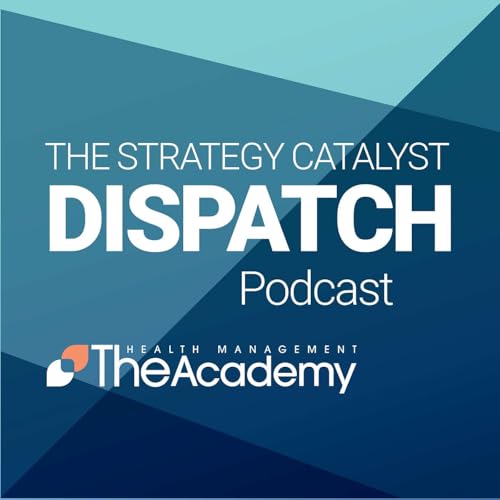
Tariffs and Strategic Planning Under Policy Volatility
No se pudo agregar al carrito
Add to Cart failed.
Error al Agregar a Lista de Deseos.
Error al eliminar de la lista de deseos.
Error al añadir a tu biblioteca
Error al seguir el podcast
Error al dejar de seguir el podcast
-
Narrado por:
-
De:
As the Trump administration continues its tariff agenda, health systems are grappling with a new wave of disruption, spanning medical goods, supplies, capital infrastructure, and the pharmaceutical pipeline. In this episode of The Dispatch, hear from Jerome Pagani, Executive Director of Strategy Catalyst, who breaks down what this means for health systems, along with supply chain and procurement experts assessing the front-line impacts and how systems are recalibrating.
From vendor negotiations and procurement triage to capital planning and pharmaceutical risk, this episode is a must-listen for strategy leaders confronting pricing volatility and policy unpredictability.
Leaders featured in this episode:
- Ginger Sharp, VP and Chief Supply Chain Officer, Legacy Health
- Harold Dillow, VP of Supply Chain Management, TriHealth
- James Bouchard, Partner, LogicSource
*This podcast was recorded on June 27th. Recent tariffs developments have included:
- 200% Tariffs Threatened on Pharmaceuticals with a 12–18 month grace period
- 50% Tariff on Copper Takes Effect August 1
- 30% Tariffs on EU and Mexico Set for August 1
- 25-35% Tariffs on APIs from India and China
Key Takeaways:
- Product origin opacity and hidden fees are complicating procurement. Experts described how vendors are unable or unwilling to identify where products are manufactured, sometimes offering blended tariff surcharges. Some suppliers are embedding tariff-related costs in invoices without transparency as general price increases, while some automated EDI systems are missing new charges.
- Centralized monitoring and concierge triage are helping manage uncertainty. Legacy Health created a supply chain help desk to track vendor notifications, vet price increases, and escalate questionable charges. Leveraging GPO protections is essential to cost containment.
- Stockpiling can be useful but must be targeted. TriHealth emphasized that any inventory build-up must be aligned with real demand. Buying excess or accepting bulk deals without volume alignment can backfire, especially as the future of tariff policy remains uncertain.
- Tougher negotiation and vendor consolidation are essential strategies, and smart supplier vetting is a must. Health systems can gain from playing hardball and rejecting tariff-related hikes outright or delaying them to wait out policy volatility. Some systems are consolidating spend with key suppliers to gain more leverage and greater absorption of tariff costs. For alternative vendors, health systems should examine supplier history, delivery reliability, and ability to meet clinical standards. Flexible, short-term contracts are preferred to maintain agility as policy continues to shift.
- Capital rescoping and domestic sourcing are emerging tactics Leaders are reassessing building specs to reduce reliance on tariff-exposed materials. When possible, they are exploring alternative materials and localized sourcing strategies to mitigate cost spikes in construction projects.
- Drug tariffs could deepen shortages and cause higher prices, particularly for generics. With 80% of U.S. generics finished abroad and APIs sourced globally, new duties on inputs from China and India pose significant disruption risk. Experts warn of quality degradation, rising prices, and limited reshoring feasibility.



